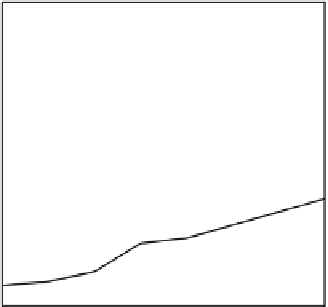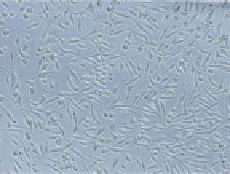Biomedical Engineering Reference
In-Depth Information
Fig. 8 Phase contrast image
of L929 cells recovered from
the PMBV/PVA hydrogel
after 3 days of encapsulation
3 days
16
12
8
4
Fig. 9 Proliferation of
fibroblast (L929) cells in the
PMBV/PVA hydrogel (
filled
circles
) and on TCPS (
circles
)
0
01234567
Preservation/culture period (days)
hydrogel after dissociation by the addition of
D
-fructose. The cell survivability in
the hydrogel was 96.5%
1.1% after 72 h. The maximum L929 cell proliferation
was exhibited after 4 days on the TCPS. On the other hand, the proliferation of L929
cells was maintained for 11 days in the PMBV/PVA hydrogel. The viability of the
L929 cells in the PMBV/PVA hydrogel was maintained at more than 90% during the
11 days. The viability of the L929 cells on the TCPS was 60% after 11 days.
4.4 Control of Cell Cycle in the Hydrogel
It is hypothesized that cells proliferate uniformly and that the distribution of cell
cycle phases is synchronized in the G0/G1 phase in the PMBV/PVA hydrogel. It
has also been reported that cells synchronized at G0/G1 phase express a high level
of cell-specific functions [
59
]. Thus, it is expected that the PMBV/PVA hydrogel
can avoid a reduction in activity of entrapped cells and preserve cells with high
functionality.
The PMBV/PVA hydrogel containing L929 cells was prepared and incubated
for 7 days. After recovery from the PMBV/PVA hydrogel, L929 cells were fixed


























